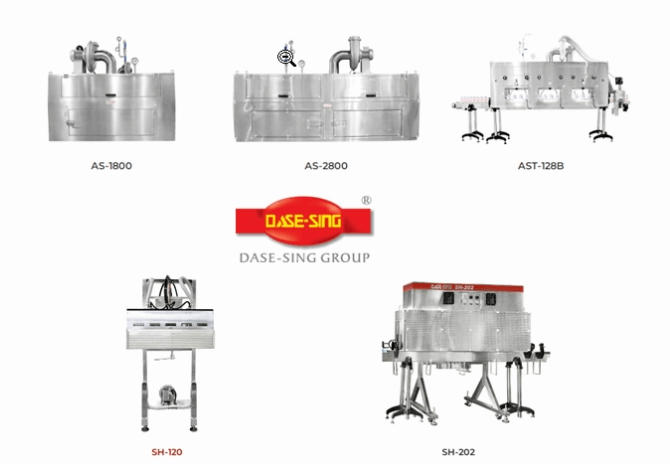
Choosing the Right Shrink Tunnel
When it comes to choosing the right shrink tunnel for your business, there are two main options to consider: steam tunnels and electrical tunnels. Both have their advantages and disadvantages, so it's important to evaluate your specific needs and requirements before making a decision.
Steam tunnels use steam as the heat source to shrink the film around the product. They are known for their efficiency and ability to quickly heat the film. On the other hand, electrical tunnels use electric heating elements to achieve the same result. They are often preferred for their ease of use and lower maintenance requirements.
To choose the right shrink tunnel, consider factors such as the size of your operation, the type and volume of products you need to shrink wrap, and your budget. Additionally, take into account your facility requirements and the shrink ability of each type of tunnel.
Calculating the total cost of ownership is crucial when comparing steam and electrical shrink tunnels. It's not just about the initial purchase price, but also the long-term costs associated with maintenance, energy consumption, and film waste.
Steam tunnels generally have a higher upfront cost compared to electrical tunnels. However, they can be more cost-effective in the long run due to lower energy consumption and reduced film waste. Electrical tunnels, on the other hand, may have lower initial costs but can result in higher energy bills and increased film waste.
To accurately calculate the total cost of ownership, consider factors such as energy efficiency, maintenance requirements, film usage, and potential downtime for repairs. This will help you make an informed decision and choose the shrink tunnel that offers the best value for your business.
Before choosing a shrink tunnel, it's important to analyze your facility requirements. Consider factors such as available space, power supply, and ventilation.
Steam tunnels typically require more space compared to electrical tunnels due to the need for a separate boiler or steam generator. They also require a reliable and sufficient power supply to operate the steam generator. Additionally, proper ventilation is necessary to remove excess steam and prevent moisture buildup in the facility.
On the other hand, electrical tunnels are generally more compact and require less space. They can be easily integrated into existing production lines without significant modifications. However, it's still important to ensure that your facility has the necessary power supply to operate the electrical tunnel.
By analyzing your facility requirements, you can determine which type of shrink tunnel is the most suitable for your workspace and ensure smooth operations.
The shrink ability of a tunnel is an important factor to consider when choosing between steam and electrical options. Shrink ability refers to the tunnel's ability to effectively shrink the film around the product, resulting in a tight and secure wrap.
Steam tunnels are known for their excellent shrink ability. The steam heat evenly distributes throughout the film, ensuring a consistent and tight wrap. This is especially beneficial for irregularly shaped products or those with sharp edges.
Electrical tunnels also provide good shrink ability, but it may vary depending on the specific model and design. It is often applied for cap sealing label or label before filling. It's important to evaluate the performance of electrical tunnels in terms of shrink quality and consistency before making a decision.
Assessing the shrink ability of both steam and electrical tunnels will help you determine which option can deliver the desired results for your products.
Understanding shrink films is essential when choosing a shrink tunnel. Shrink films are typically made from polyolefin or PVC and come in different thicknesses and strengths.
Polyolefin films are commonly used in both steam and electrical tunnels. They offer excellent clarity, high shrinkage, and durability. PVC films, on the other hand, are primarily used in electrical tunnels. They provide good shrinkage but may not be as durable as polyolefin films.
When selecting a shrink tunnel, consider the type of films you plan to use and ensure compatibility with the chosen tunnel. Additionally, assess the film's thickness and strength to ensure it can withstand the heat and shrinking process.
Exploring shrink films will help you make an informed decision and choose a shrink tunnel that is compatible with your preferred film materials.
Both steam and electrical tunnels have their advantages and disadvantages. Understanding these can help you make a well-informed decision for your business.
Pros of Steam Tunnels:
- Excellent shrink ability for tight and consistent wraps
- Efficient heat distribution for faster shrinkage
- Lower energy consumption
- Reduced film waste
- Suitable for irregularly shaped products or those with sharp edges
Cons of Steam Tunnels:
- Higher upfront cost
- Require additional space for a separate boiler or steam generator
- Need proper ventilation to remove excess steam
- Potential maintenance requirements for the steam generator
Pros of Electrical Tunnels:
- Ease of use and lower maintenance requirements
- Compact size for easy integration into existing production lines
- Suitable for a wide range of products
- Lower initial cost
Cons of Electrical Tunnels:
- Higher energy consumption
- Increased film waste
- Shrink ability may vary depending on the specific model
By weighing the pros and cons, you can determine which type of tunnel aligns with your business goals and requirements.
If you need more information about real practice, welcome to contact us
More video:
https://www.youtube.com/@dase-singpackagingtechnolo8451
Contact us:
matt@dasesing.com